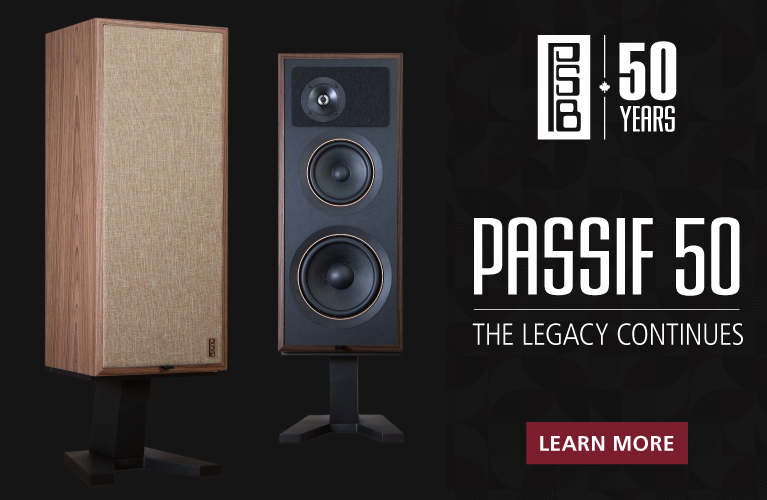Some audio gear is easy to write about. Other stuff requires more effort. I’m not talking about describing a component’s sound, but about describing the process of setting it up and evaluating its features. I find writing about loudspeakers relatively straightforward—the most important thing is to set them up correctly, a task made far simpler when you know your listening room well. I also find it easier to hear differences between two pairs of speakers than between, say, two good integrated amplifiers. Reviewing something like Anthem’s STR Preamplifier is even more challenging because it has so many features and functions, all or most of which should be evaluated if the aim is to write a comprehensive review.
Most turntables don’t have numerous features requiring individual examination. However, every turntable comprises component parts, many of which can be individually adjusted, and each of which influences the sound. The only way to isolate the contribution to the sound of each of these parts is to swap out those parts one at a time. This is the most basic precept of scientific experimentation: If you change more than one variable at a time, you don’t know which of those variables has produced a change, if any, in the results. When that procedure is not followed, you’re left describing the sum of the parts without having any idea which part has done what to the sound.
Which is why, until now, I haven’t reviewed a turntable. I bought my first and only turntable in 2009, and have never had any interest in taking the time needed to properly install and adjust a different cartridge or switch tonearms, so I could evaluate them properly. Maybe I’m lazy, but the only reason I bought a turntable is to listen to music on a medium I love: the vinyl LP. I never wanted that to feel like work.
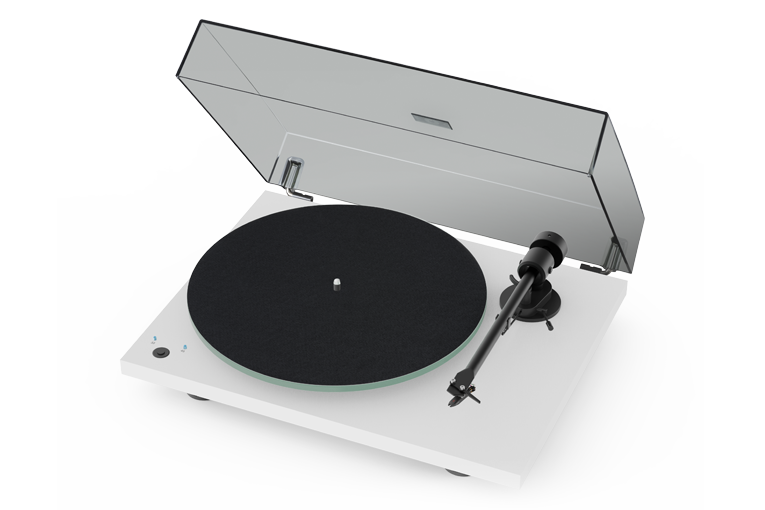
So when SoundStage! Network publisher Doug Schneider asked if I wanted to review a Pro-Ject Audio Systems entry-level turntable, the T1 Phono SB, my first instinct was to decline. But when Doug then explained that the deck would arrive from Pro-Ject already set up, and that my only task was to connect it to my stereo and plug it in, I consented. This means I can discuss the sound quality of the T1 Phono SB only as a whole—but given that it’s sold as a package, or bundle, and that many potential buyers will use it as delivered, straight out of the box, that seems less of a problem.
Plug and play
Over the years, as Pro-Ject Audio Systems has grown from a company of fairly modest size into one that appears to have a hand in just about every aspect of audio, the SoundStage! Network has reviewed many of their products. Perhaps most impressive about Pro-Ject isn’t the size of its catalogue but the fact that this Austrian company still builds all its turntables, including the flagship models, in the Czech Republic. With so many audio companies in the West now sending their manufacturing to Asia, it’s nice to buy something made in Europe, especially when it sits at a price point that many people can afford it.
The T1 Phono SB ($399, all prices USD) is a belt-drive turntable that comes with everything you need to start listening to vinyl already installed and adjusted: the plinth and platter, pre-mounted tonearm and cartridge, phono cable—even a built-in phono stage. Pro-Ject makes two other versions of this model: the T1 ($349), without phono stage; and the T1 Phono BT ($449), which includes phono stage, phono cable, and a Bluetooth transmitter.
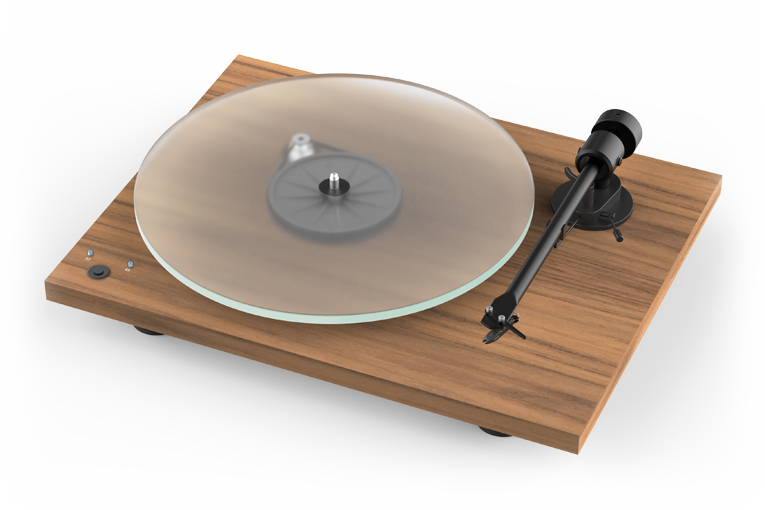
All three T1 variants are available with plinths finished in Satin Walnut, Piano Black, or Gloss White. I requested my review sample in Gloss White, and was impressed with its clean look (though the other two finishes look nice in the photos on Pro-Ject’s website). The MDF plinth is CNC-machined and, as Pro-Ject proudly advertises, includes no plastic parts.
The owner’s manual is sufficient, though I’d have preferred higher-resolution illustrations and fewer typos—surprising shortcomings from so well-established a company. If you want full-color pictures to guide you through the setup process, you’re better off downloading the startup guide from Pro-Ject’s website. But as most of the work has already been done for you, the entire procedure takes only a few minutes.
The tonearm, an 8.6ʺ-long aluminum tube with integrated headshell, pivots on a low-friction bearing that Pro-Ject claims is free of vibrations. An Ortofon OM 5e moving-magnet cartridge ($70 if bought separately) comes pre-mounted, its vertical tracking force (VTF) set to 17.5mN (1.75gm). The VTF can be adjusted within a range of 0-50mN—I left it where Pro-Ject had set it. The platter is made of blasted glass and comes with a record mat of black felt. Unlike the T1, the T1 Phono SB has an electronic speed control: you select 33⅓ or 45rpm by pressing a button in the front-right corner of the top deck. This is a nice feature—almost all of my records are LPs, but for those who have collections of 45rpm singles (Pro-Ject includes a spindle adapter for these), it’s useful to be able to switch speeds without having to remove the platter and shift the drive belt between motor pulleys.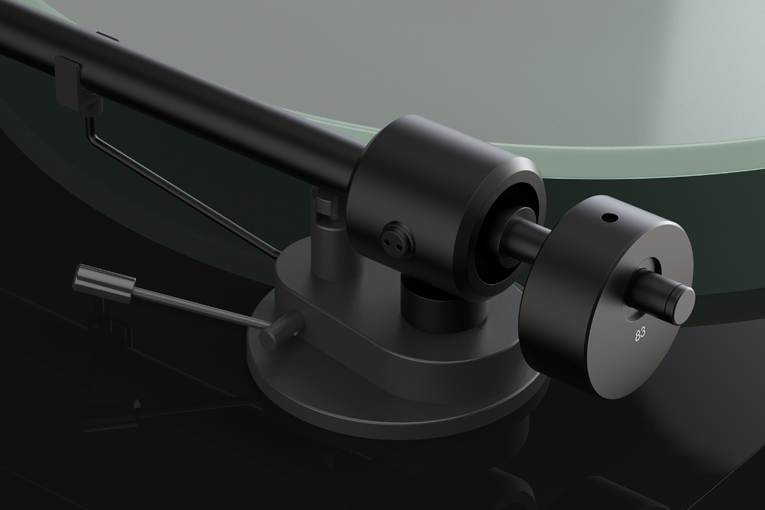
A tiny connection panel on the rear of the plinth is actually the back of a small black metal box that houses the built-in phono stage. On this panel are pairs of L/R RCA jacks for Line Out and Phono Out, and a ground post. You move a slider on the side of this box to select between using (Phono Out) or bypassing (Line Out) the phono stage, the latter if you want to use an external phono stage or preamplifier.
The detachable wall-wart power supply plugs into a jack on the back of the motor housing. Also included are a dustcover, a simple teeter-totter VTF gauge, and a paper two-point cartridge-alignment protractor. Again, this protractor is needed only if you replace the supplied cartridge—the Ortofon OM 5e comes pre-aligned. This is a lot for just $399, but there’s something else I’d like to have seen. The T1 Phono SB sits on three feet that seemed to do a fine job of decoupling it from whatever stand or shelf I set it on. However, the height of these feet can’t be adjusted—it’s important that the surface on which the turntable sits is itself level (my stand was). Alternatively, the user could put shims under the feet to add height. This is not a deal-breaker at the price—just a minor blemish on an otherwise thoroughly thought-out, well-executed product.
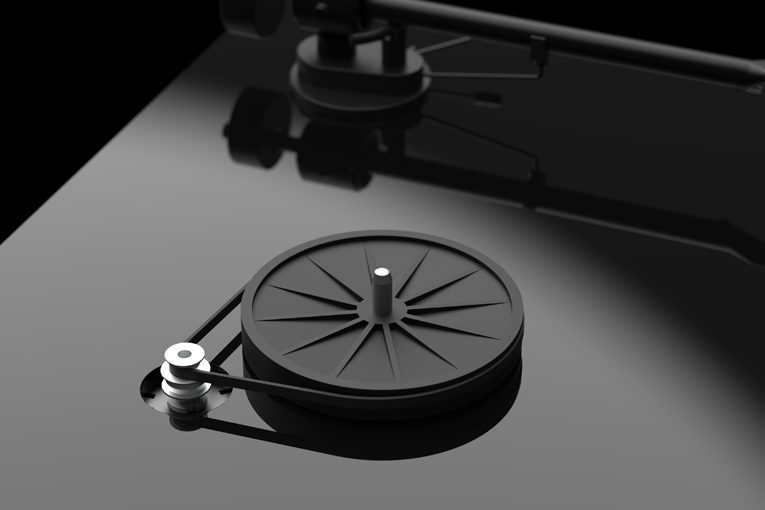
I connected the T1 Phono SB to a Bryston B135 SST2 integrated amplifier with a pair of generic RCA interconnects, and plugged the turntable’s power supply and all of my system’s electronics into an ExactPower EP15A power conditioner/regenerator. I did all of my listening to the T1 through its own phono stage. While I could have compared that stage with my own Lehmannaudio Black Cube phono preamplifier ($695), the Black Cube alone costs almost twice as much as the entire T1 ($399), which would make such a comparison pretty much irrelevant to anyone buying a T1. The Bryston drove a pair of KEF R11 tower speakers via AudioQuest Comet speaker cables terminated with banana plugs.
Sound
Pro-Ject’s manual for the T1 Phono SB doesn’t discuss break-in time, but SoundStage!’s resident vinyl guru, Jason Thorpe, told me that a new cartridge needs to put in some playing time to loosen up its suspension. So before I did any critical listening, I played a few hours’ worth of LPs.
When I finally sat down and reached for my pen and notebook, the Pixies’ 1989 classic, Doolittle (LP, 4AD CAD905), was spinning on the Pro-Ject’s platter. As I listened to “Tame,” it quickly became clear that the T1 could deliver this track’s rocking energy with aplomb. David Lovering’s drums packed good punch, but it was the rhythm of Kim Deal’s electric bass, its sound pleasingly warm and tight, that carried the music and grabbed my attention. Black Francis’s voice rose from a near-hush to a scream with explosive dynamism, adding to the music’s vigor. It was a joy listening to “Tame”—indeed, all of Doolittle—through the T1 Phono SB, which had no problem matching the album’s liveliness and potent drive. For such raucous music, Doolittle’s sound is incredibly clean and well recorded, but not so polished as to lose its edge—all of that was communicated through the T1 Phono SB.
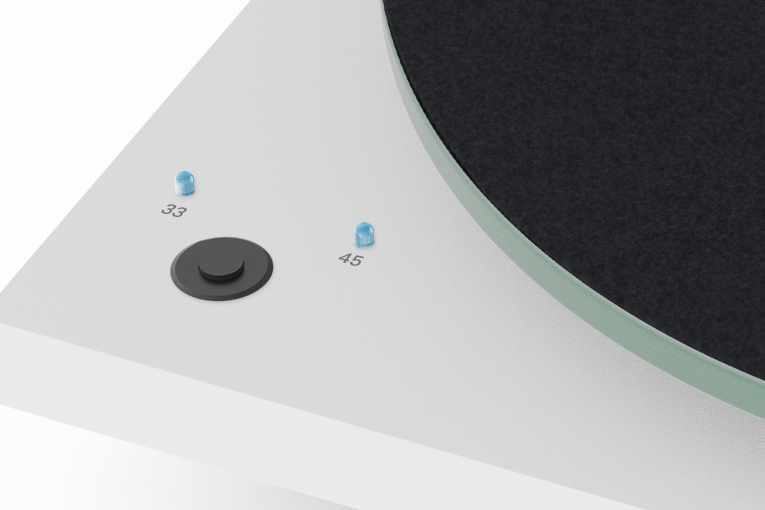
I cued up “Limit to Your Love,” from James Blake’s James Blake (LP, Polydor B0015443-01). With the stylus of the Ortofon OM 5e tracing the groove, Blake’s voice was pleasingly holographic, revealing a significant amount of space in this studio recording, space that became even more evident when the electronic bass enters. His piano sounded round and full and certainly didn’t lack body, though perhaps a touch of detail went missing—decays of notes were somewhat truncated. The cymbal that appeared just to the right of my left speaker provided a good illusion of depth that helped create a more three-dimensional soundstage.
Across a range of albums, or individual tracks on the same LP, the Pro-Ject was adept at portraying differences in recording quality—something I associate with any component I can enjoy over the long term. Moe Tucker’s gentle drumming and the dreamy, lush guitar in “Candy Says,” from The Velvet Underground (LP, MGM SE-4617), offered sharp musical contrast to Blake, but still showcased the T1 Phono SB’s imaging abilities as the ’table reproduced a large, open soundstage of considerable height. In terms of recording quality, The Velvet Underground is a mixed bag: “What Goes On” has great rhythm and drive but sounds two-dimensional. But the openness of “Candy Says” returns in “Pale Blue Eyes,” the latter song’s almost crooning quality giving it a similar laid-back feel. Of special note here is the tambourine—its shimmering zills were crisply resolved, giving the sound a considerable sense of space. The T1 Phono SB did a nice job of capturing Lou Reed’s voice—it sounded natural at the front of my room.
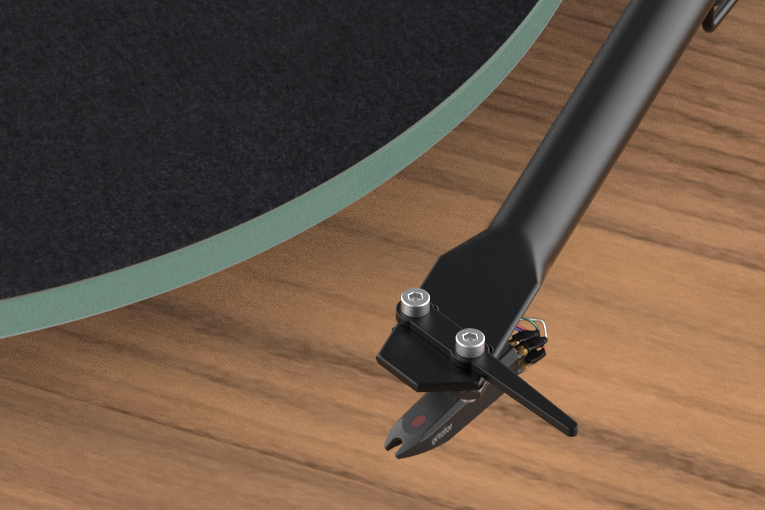
I was introduced to the songs of Tom Waits via Rod Stewart’s cover of “Downtown Train”—this was 1989, and I was a kid. Not until university did I hear Rain Dogs (LP, Island LC 0407), the 1985 album on which this song first appeared, and it’s since become a favorite of mine in a Waits catalog full of great music. The sound of falling rain and a distant storm far back on the soundstage add to the expansive sound of track 1, “Singapore,” and Waits’s rough pirate drawl and hissing enunciation of s’s were on glorious display through the T1 Phono SB. The Pro-Ject’s retrieval of vocal details was good, the positioning of his voice squarely between the speakers making it the focal point of this track. In “Clap Hands,” the way Waits spits out words could almost be felt, and it was easy to envision his voice surrounded by a huge space. “Jockey Full of Bourbon,” with its infectious, up-tempo rhythm, has a fluid pace—this track’s toe-tapping vitality was reproduced by the T1 Phono SB with incredible energy and liveliness. Indeed, listening to this Waits staple through the Pro-Ject was a treat.
Comparison
I compared the Pro-Ject T1 Phono SB with my Thorens TD 160 HD ($2900). On it is a Thorens-modified Rega Research RB250 tonearm, and installed in that is a low-output moving-coil cartridge from Sumiko, the Songbird ($899). Unlike the T1 Phono SB, the Thorens has no built-in phono stage; I plugged its phono cable into a Lehmannaudio Black Cube phono preamplifier ($695), which in turn fed my Bryston integrated.
The differences were far from subtle—hardly a surprise, given that the Thorens rig costs 11.25 times as much as the Pro-Ject, but it was still interesting to switch back and forth between them. The Thorens-Rega-Sumiko-Lehmannaudio chain sounded more powerful, and delivered a fuller-bodied, bigger sound. The deep-bass drones on James Blake had a lot more weight through the Thorens, while Blake’s voice and piano had greater presence. Of course, I have no idea how much of what I heard could be attributed to the turntable, or to the tonearm, or to the cartridge, or to the phono stage—but the sound of my analog array was in another league.
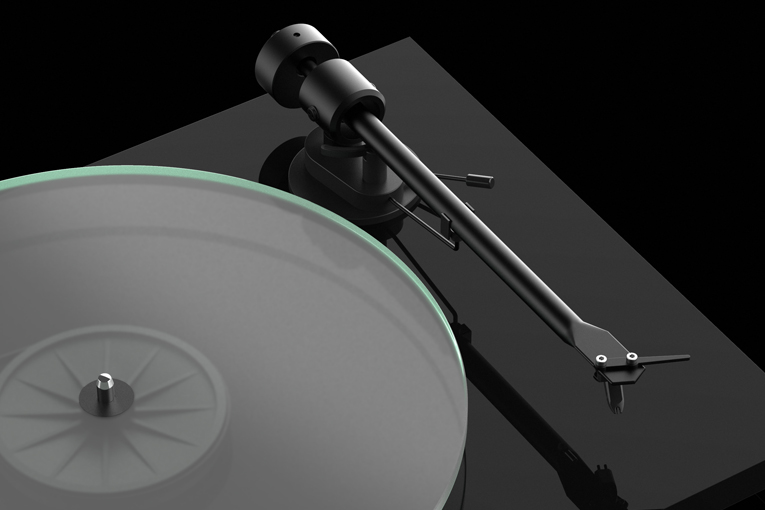
The drum kit in “Ball and Biscuit,” from the White Stripes’ Elephant (LP, Third Man 63881-27148-1), had good impact and heft through the Thorens rig, but it was the cymbal that caught my attention—it seemed to linger in space between the speakers, just above ear level when I was seated, adding realism and presence. Played on the Pro-Ject, this track still sounded powerful, and the cymbal was every bit as lucid and present as through the Thorens—but the stage didn’t sound as open, seeming a bit more congested. I also found that, at higher volumes, the screech of Jack White’s electric guitar was a bit strident through the Pro-Ject, lacking the smoothness of its sound through the Thorens.
Despite the Pro-Ject’s shortcomings, they were obvious only as I switched between it and the Thorens. Had I never heard the more expensive deck, I’d have had no idea what I was missing. Presumably, if I heard a turntable costing 11 times the price of my Thorens-Rega-Sumiko-Lehmannaudio rig, I’d find my setup inferior. Does that prevent me from enjoying records played on my system? Absolutely not—nor did it detract from my enjoyment of what the Pro-Ject T1 Phono SB could do.
Conclusion
At $399, Pro-Ject Audio Systems’ T1 Phono SB is an easy recommendation. I thoroughly enjoyed my time with it. It’s an excellent starter bundle—and, when you’re ready for an upgrade and funds permit, Pro-Ject offers many more turntables higher in its model hierarchy. Not only is it visually attractive, it performed amazingly well with a variety of music, and had me pulling out LP after LP, to hear how each would sound played on the T1 Phono SB. Not once was I disappointed. In fact, I was downright impressed.
. . . Philip Beaudette
philipb@soundstagenetwork.com
Associated Equipment
- Speakers: KEF R11
- Phono stage: Lehmannaudio Black Cube
- Integrated amplifier: Bryston B135 SST2
- Analog source: Thorens TD 160 HD turntable, Rega Research RB250 tonearm, Sumiko Songbird MC cartridge
- Speaker cables: AudioQuest Comet
- Power conditioner: ExactPower EP15A
Pro-Ject Audio Systems T1 Phono SB Turntable
Price: $399 USD.
Warranty: Two years parts and labor.
Pro-Ject Audio Systems
Margaretenstrasse 98
A-1050 Vienna
Austria
E-mail: info@project-audio.com
Website: www.project-audio.com
Canadian distributor:
Gentec International
90 Royal Crest Court
Markham, Ontario L3R 9X6
Phone: (905) 513-7733
Website: www.gentec-intl.com
US distributor:
Sumiko
2431 Fifth Street
Berkeley, CA 94710
Phone: (510) 843-4500
Fax: (510) 843-7120
E-mail: mail@sumikoaudio.net
Website: www.sumikoaudio.net






















